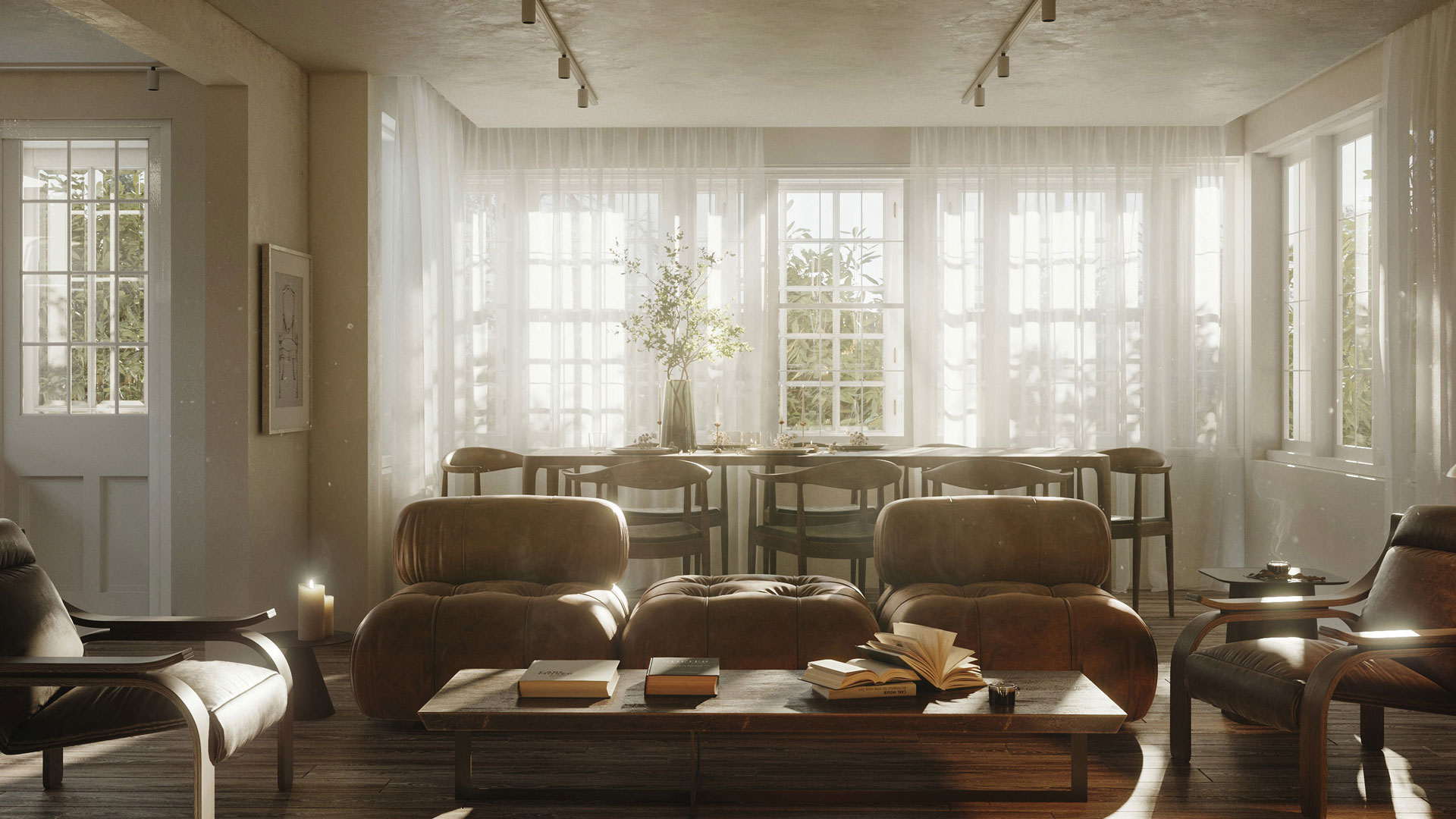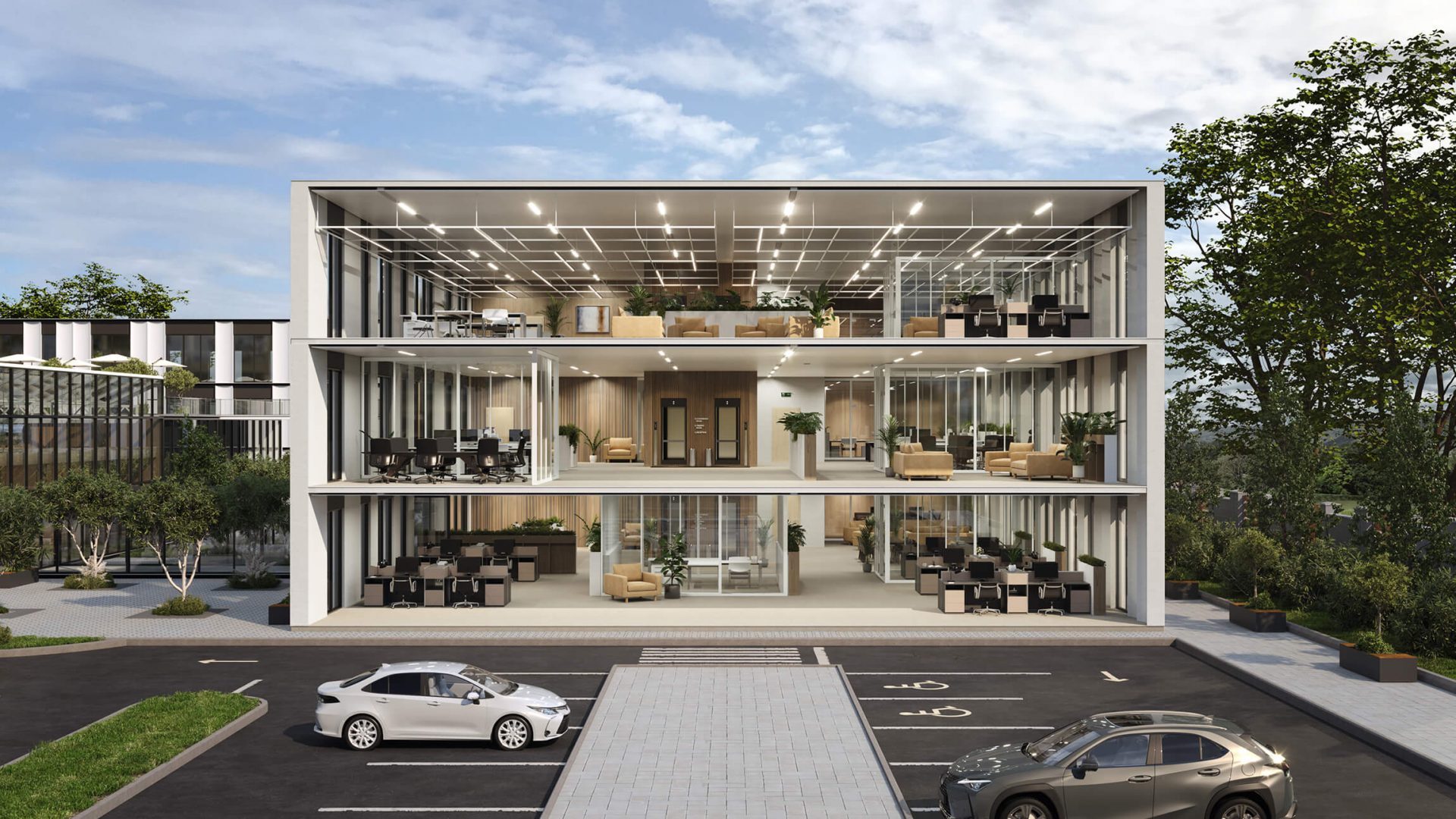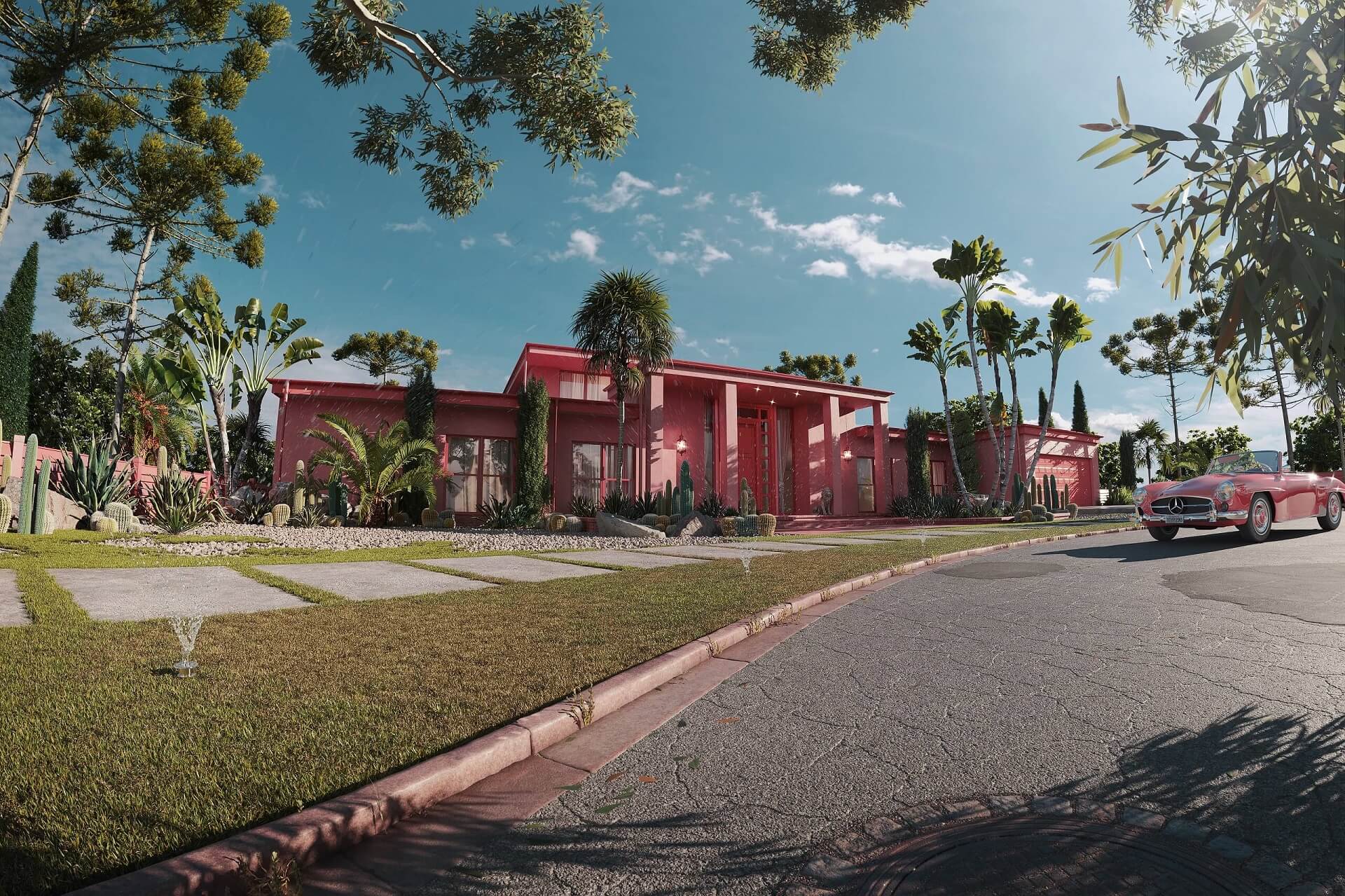In architecture, interior design, and real estate, 3D visualization is indispensable. It provides high-quality visuals for portfolios, presentations, and marketing materials. One of the best things about CGI is its versatility. There are different architectural visualization techniques, each better suited for particular purposes such as conveying the practicalities, aesthetics, or creative spirit of design. So, what exactly can archviz bring to the table? And what type of it to choose for your project?
Our 3D achitectural rendering studio works with different techniques and styles. We help our clients flawlessly bring their visions to life and stand out from their competitors. So, in this article, we’ll cover five archviz techniques that can make your project shine in different ways. Let’s get into it!
#1. Realistic Renders

Renders of this kind are the gold standard in architectural visualization. They offer a practical and effective way to present projects in a lifelike manner. Need to pitch a concept to stakeholders, showcase a future look of your project under construction, or save money on complicated photoshoots of an existing building? Photorealistic renders can cover all the bases.
It’s fair to say that achieving mastery in photorealism is no small feat. It demands a combination of artistic skill and technical know-how. At ArchiCGI, we specialize in this craft. Our team of 3D artists has more than 12 years of experience and excels in delivering realistic, detailed visualizations. The renders we create can provide your clients and stakeholders with a captivating, vivid, and true-to-life preview of architectural designs.
Ensure your exterior design project leaves a lasting impression and takes your clients’ breath away with stunning visuals.
#2. Stylized Visualizations
Among various architectural visualization techniques, this one has the most artistic flair. For example, watercolor renders can give presentations a unique feel if the project demands it. Let’s consider some other options too.
These grayscale renders were made for one of our clients.
Grayscale rendering is typically used as an intermediate result in CGI projects. The client, however, approached it creatively. Upon his request, we made grayscale visualizations with a bit of a cartoonish feel to them (mostly due to blocky geometrical trees) and warm lighting. This approach significantly sped up the workflow compared to that of classical CGI-making techniques with texturing. And it ensured the renderings had a distinctive stylized look.
This is another example of interior rendering services from our portfolio.

Though the image is photorealistic in nature, the creative lighting, warm hue, and subtle details, such as burning candles and an open book, give it an almost magical feel. As you can see, here slight stylization allowed us to set a dreamlike, fairy-tale atmosphere.
#3. Creative/Futuristic Visualization

Such renders serve as a playground for architects and designers. Using this type of CGI, they can visualize their boldest ideas. Often, such concepts may not be brought to life in the foreseeable future (for example, due to technical limitations). But they are definitely worthy of attention.
A visualization like that can become a powerful asset for social media marketing. It can also serve as a conceptual architectural illustration for competitions. Such renderings instantly capture the jury’s and the audience’s imagination. And most importantly, they convey the creator’s artistic vision in full splendor.
Take a look at the example above. This rendering was created for an internal competition at ArchiCGI, in which our artists had full creative freedom.
Take your design presentation to a new level with interior rendering
The image reminds us of sci-fi designs and the forest cities of Tolkien’s elves at the same time. This way, it catches the eye and makes you want to explore the concept more!
#4. Cutaway Renderings
Imagery made using these types of architectural visualization techniques works great for conveying technical intricacies and spatial layouts. It offers a nuanced glimpse into the bones of a design. There are different purposes these renderings can serve.
First of all, cutaways can showcase the integration of a new building with the existing infrastructure.

Road junctions, underground parking lots, and communications can be visualized this way.
The techniques of dollhouse rendering for architecture allow one to dissect the structure, exposing its inner workings.

3D dollhouse real estate rendering is a unique way to show surroundings, exterior, and interior in one image.
Finally, 3D floor plan visualization elevates traditional blueprints to new heights. It shows designs in section from above, combining informativity with a photoreal look.

So contact a 3D floor plan rendering company for an image that shows both functional and aesthetic aspects of the interior.
#5. Dynamic Visualizations
Last but not least on our list of architectural visualization techniques are motion-based ones.
The simplest animation can serve many purposes. Need to showcase subtle light changes in a room during the day? Want to reveal spatial or technical details without a pile of static images? An architectural animation studio can do it all.
What’s more, thanks to its dynamic, immersive nature, it will immediately grab the viewer’s attention on your social media or website.
3D rendering for a virtual tour takes the immersive experience a step further.
Such a tour enables viewers to navigate a future space as if they were physically present inside. This fosters a deeper emotional response and understanding of the design.
Finally, a 3D cinemagraph can introduce subtle motion to key design elements within a static image.

These visuals offer a captivating mix of stillness and motion. It can add an extra layer of engagement to your architectural storytelling.
These dynamic techniques redefine the boundaries of traditional visualization. They offer a compelling and interactive means of showcasing your architectural visions.
Get your project estimated in just 1 hour - fill out this brief!
Each of the described architectural visualization techniques has its unique strengths. They cater to diverse needs in architecture and real estate projects. And as technology advances, CGI offers more and more possibilities. You can use it in many forms to empower all your marketing and presentation materials.
Looking for a professional CGI services provider? Contact ArchiCGI to get stellar images in any of the techniques!

Stacey Mur
Content Writer, Copywriter
Stacey is a content writer and a CG artist. Outside of work, Stacey enjoys musicals, Star Wars, and art talk. A proud Corgi parent.



